#german born artist
Explore tagged Tumblr posts
Text

Ditlev Martens (July 26, 1795 - 1864) was a German-born Danish painter who studied at the Academy in Copenhagen under Eckersberg and received a Royal Stipend from the Danish King. He spent time in Rome with Thorvaldsen and later settled in Hamburg. When his studio there burned down he relocated to Copenhagen.
Martens was chiefly an architecture painter and the accuracy of his works has helped reconstructing and restoring several historical buildings in Denmark.
Above: Det indre af Roskilde Domkirke, 1824 - oil on canvas (SMK)
#art#danish painter#ditlev martens#danish royal academy of fine arts#smk#smkmuseum#statens museum for kunst#oil on canvas#architectural art#roskilde cathedral#c.w. eckersberg#bertel thorvaldsen#german born artist#1820s
5 notes
·
View notes
Text

Hannelore Baron, Untitled, ca. 1976, mixed media: fabric, thread, and pen and ink on fabric mounted on paperboard, image: 73⁄8 x 63⁄4 in. (18.8 x 17.3 cm), Smithsonian American Art Museum, Museum purchase, 1977.76

Hannelore Baron (June 8, 1926 – April 28, 1987) was a German-born American artist who created highly personal, book-sized, abstract collages and box constructions, and exhibited in the late 1960s. via Wikipedia
1 note
·
View note
Text
Happy 88th birthday (10/19), Peter Max

13 notes
·
View notes
Text

Exploring The Geometric Elegance Of Joseph Binder’s Vintage Posters
Joseph Binder, a Vienna-born graphic designer and painter, founded Wiener Graphik in 1924. Gebrauchsgraphik, a leading German design magazine, showcased his work. Natural images depicted in geometric forms and flat colors defined his Viennese work.



#joseph binder#artist#art#vienna-born graphic designer#painter#geometric elegance#vintage posters#posters#wiener graphik#gebrauchsgraphik#german design magazine
1 note
·
View note
Text

Franz Anton Maulbertsch, Triumph der Aurora
#Franz Anton Maulbertsch#powerpoint slide#german rococo#hungarian rococo#dawn in paintings#born in Langenargen#austrian artist
1 note
·
View note
Video
youtube
Lou Bega - Sing it Back Live Mix #joymusic #dancecover @La-Musique @D...
0 notes
Text
“Nosferatu” (2024) and the Female Gothic Genre, Paganism and the Occult
The Gothic novel genre is deeply connected with female authors like Ann Radcliffe, Mary Shelley, Brontë sisters, Mary Robinson, and Charlotte Dacre, because it allowed them to explore themes that were “off limits” to women at the time (19th century) especially sexuality and women’s place in a patriarchal society. Hence the “Gothic female” genre was created, as a way for female authors and readers to digest their mixed feelings about these topics. This is the world Robert Eggers transports his audience in “Nosferatu” (2024).

This film checks every box of the Gothic genre: claustrophobic atmosphere, environment of fear, the threat of the supernatural, ruined buildings (usually from the Medieval ages), dreamlike states, nocturnal landscapes, demonic possession, blend of “high culture” and “low culture” (folklore), superstitious rituals, melancolia, melodrama, decay, fate, the macabre, the intrusion of the past into the present, stories of persecution, imprisonment and murder as metaphors for social conflict.
Indeed, the audience can’t analyze this story through contemporary lenses or bias, because it’s suppose to be an immersive experience into the Gothic genre and the Victorian era. The terms “gothic” and “romantic” exist in their historical context; “gothic” as in the literature genre (gothic novel), and “romantic” as in the 19th century artist movement (Romanticism).
No, this is not a story about grooming nor abuse... it can be, but not in the way many are interpreting it. Folks also need to let go of previous adaptations and their meanings, because this is Robert Eggers take on this story. And, it’s everything a remake (or retelling) should be, because its not a rehash, it’s a new interpretation of a old story, “Dracula”.
Robert Eggers tells us that the themes of sex and death are at the core of his story, it’s a “demon lover story”, and it’s Count Orlok and Ellen psychosexual connection that makes his adaptation different from the rest.
Ellen is our female gothic protagonist, and, like similar characters of the genre, she’s a persecuted heroine fleeing some a villainous outside force, personified by Count Orlok, the archetypal Death. Metaphorically, she’s a young woman haunted by her own mortality, by Death itself. She also has a sense of Doom looming over her, the heavy hand of Fate; can we outrun our destiny? “Providence!” Herr Knock screams throughout the film; as in a supernatural force, commonly God, guiding humanity destiny.

Ellen is no typical young woman, though. As she tells Von Franz, she had occult powers since childhood, being able to perceive glimpses of the future and suffering premonitions (knowing the contents of her Christmas gifts and when her mother would die). Her father called her “his little changeling girl”, as in the European folklore of human children kidnapped by supernatural creatures (fairies, demons, etc.) and a substitute being left in their place. Herr Knock also compares Ellen with a “sylph”, when he informs Thomas he’s to travel to Transylvania. “Sylphs” are air spirits from 16th century Germanic folklore and alchemy, a sort of nymph connected to air element in hermetic literature; throughout the centuries they have been culturally associated with fairies, too. We have two characters in the story connecting Ellen with a fairy-like creature. Interestingly enough we, the audience, see her floating in the opening scene.

“You are not for the living. You are not for human kind”, Orlok tells her, and calls her “enchantress”. Von Franz also said Ellen could have been a priestess of Isis had she been born in pagan times. Isis is one of the major Egyptian deities, considered the goddess of magic and healing. She was also connected with the Dead and funeral rites, since she was the sister-wife of Osiris, ruler of the Underworld. Pagan priestesses also entered trancelike states as Ellen “hysterical seizures” or “epilepsies” when communicating with the spiritual world, which is what Von Franz, the occult and alchemist student, recognizes in her. Ellen is a supernatural force, too.
Eggers Orlok was a sorcerer in life, a practitioner of Black Magic. He was one of the Solomonari, wizards from Romanian folklore, believed to be students of the Devil, who learned to ride dragons, and control beasts and the weather. In Eastern European tradition, the Solomonari were believed to be recruited among common folk and disguise themselves as beggars, Orlok is a Romanian nobleman who sought to achieve immortality, to conquer Death. As the abbess tells Thomas, the Devil preserved Orlok’s soul that his corpse may walk again in blasphemy, as a vampire feeding off the blood of the living and spreading plague.

However: who was it who awoke Orlok in “Nosferatu”? The Devil or Ellen?
At the prologue, we see Ellen crying and begging for companionship. She prays for a guardian angel, a spirit of comfort, a spirit of any celestial sphere, anything, to hear her call and come to her. She’s summoning some occult force and inviting it into her life. Orlok answers her call. And why is she doing this? She feels lonely, isolated and misunderstood by those around her. As she tells Von Franz, she’s no longer her father’s “little girl” and he recoils from her touch, because she’s no longer a child. As she grows older and enters womanhood, she starts to feel ostracized and put aside by 19th century society who has rigid gender expectations of her.

According to Orlok, it was Ellen who awoke him: “O’er centuries, a loathsome beast I lay within the darkest pit… ‘til you did wake me, enchantress, and stirred me from my grave. You are my affliction.” Which Ellen later confirms to Thomas: “I have brought this evil upon us” because she sought companionship and tenderness. This is a belief Von Franz also shares: it’s Ellen who “wills it”, and she’s the one who unleashed this plague upon the world.

This is very fitting with the Gothic female novel, where the supernatural connects with female societal status of this time period, generally women’s discontent with patriarchal society, difficult and unsatisfying maternal position (in “Nosferatu” we see this with Anne’s character, where she equals being pregnant with being drained of her life force) and their role within society (fear of entrapment in the domestic sphere, their bodies, marriage, childbirth, etc.).
Eggers’ Orlok is a combination of several Romanian folklore creatures, associated with vampirism: strigoi, moroi (these two are the “classic” vampires) and zburător (a ghost-like creature, usually handsome, and only visible to young women, attacks at night, usually newly-wed ladies and does “indecent” things with them). The influence of this legend in Ellen and Orlok story is evident.
Ellen tries to summon a spiritual companion in her teenage years, most likely when she reached puberty and her sexuality was starting to awake. A demon who’s a personification of appetite, devourance, sex and death is the one who answers her calling. They end up in a sexual spiritual connection, as Ellen experiences her sexual awakening with him, as shown in the prologue and later confirmed how Orlok took her as his lover. She also reveals to Thomas it was “sweet” and she “had never known such bliss” at first, until it turned into torture (seizures and nightmares), when her father found her laying unclothed and called her a sinner and it’s implied she might have been institutionalized, as she tells Von Franz. This episode might be a metaphor for masturbation and the historical shame associated with it. Hence her connection with Orlok being her “melancholy” (depression) and her “shame”, symbolic for the sexual urges 19th century society forced women to repress.
Count Orlok is the archetypal Death; which culminates with the “Death and the Maiden” motif at the end. This was a very popular Art History archetype around the so-called “Plague years” (14th to 16th century) in Europe, and it’s often connected with other motifs like “Danse Macabre” and “Memento Mori”. It has several meanings depending on the author intent, usually a reminder of our mortality, but also a meditation on sex and death, as in the French “la petite mort” (“little death”), the post-orgasm sensation, sexual release potentially causing temporary loss of consciousness (fainting) or dizziness. In the Medieval Ages, physicians believed orgasms could lead to death because they drained the “life force” from the body. This was when the term “petite mort” was created, and this belief persisted into the Renaissance and beyond. In “Nosferatu” this probably translates in the sexual pleasure that Orlok imprints on his victims as he drains their life force.
Ellen’s “hysterical seizures” miraculously stop once she meets and marries Thomas Hutter, our tragic romantic hero. This can also be a nod to Gothic Bildungsroman (“coming of age”) genre; where the female protagonists grow from adolescence to adulthood in the face of the impossibility of the supernatural, and come to the conclusion there’s a rational explanation. In Ellen’s case, it’s medical, as she’s diagnosed as a melancholic somnambulist hysteric (in another words, a depressive hyper-sexual sleepwalker).
At the beginning of the story, Ellen and Thomas are newly-weds fresh out of their honeymoon, which means sex (historically necessary to consummate marriages). With Thomas, Ellen is “free of her shame”, as she says so herself. Because, her sexuality is safely contained within marriage, as it’s socially acceptable. But Thomas dismisses her concerns about his well-being, and doesn’t believe her until he experiences the supernatural first-hand, having an homoerotic encounter with Orlok himself, which also causes him great shame. This is probably a Easter egg for Bram Stoker possible closet homosexuality and “Dracula” being a metaphor for that.

Thomas’ main concern, throughout the story, is to fit into the patriarchal ideal of his genre, as a provider for his wife, and he aspires to be like his long-time friend, Friedrich Harding, the “perfect patriarch” with the perfect religious and dutiful wife, Anna, and their precious children. The Hardings are the perfect Victorian family; they are everything society expects them to be. Friedrich even chastises Ellen for her nature, and it’s clear he resents her for what she represents: “otherness” and “deviance” to societal norms.

However, soon enough, Ellen’s seizures return, symbolizing Thomas cannot sexually satisfy her. She’s “too ardent” as Harding calls her. “More! More!” She begs Thomas when they have sex to scorn Orlok. Not only her sexuality is too strong, but Thomas also shares with Friedrich his desire to wait to have children with Ellen because he wants to gain financial stability first. This in a time period when contraceptives weren’t widely spread, meaning abstinence.
Symbolically, Ellen’s seizures can also be connected with her fear of childbirth. Her “epilepsies” return while she’s staying in the Harding household, where they are children and Anna is pregnant. Children is what is expected of Ellen next, after all. But it’s sexual pleasure that Ellen seeks, and this causes her great shame and torment, because 19th century women weren’t suppose to known “such things”. “Sin! Sin! Sin!” as Ellen’s father screamed at her when he found her naked.

Fear of entrapment represented as Ellen tries to rip off her corset and “free herself”: this happens during one of her Orlok induced seizures.
As Robert Eggers tells us, Orlok both disgusts and attracts Ellen, she loves and hates him at the same time. He’s repulsive, rotten, animalistic and lustful, both literally and metaphorically. His character design is meant to invoke contradictory feelings in the audience: overall he’s foul and monstrous, but he appears almost handsome in some shots. This is intentional. Not only he’s a personification of Death, but of Ellen’s repressed sexuality by 19th century society. He represents the monstrous and dangerous female sexuality the Victorian era sought to contain. He’s the transgression and taboo theme in this Gothic story, as well: necrophilia. Which is probably Eggers “gotcha” moment to “vampire lovers” everywhere, as he forces his audience to confront their own bias.

Ellen herself is a medicalized character, as we see her being institutionalized, drugged, bound to her bed, forced to wear a corset to bed, and used as a scientific experiment by physicians. She’s not in control of her own body, and has little agency over it, overall. We see her being contained, literally and metaphorically, too. This is probably meant to symbolize women as a whole in 19th century Western European societies. The “disability of being female” is one major theme in Gothic female novels, after all.

And if Ellen unleashed Orlok unto the world and he’s connected with her what does this mean for this story? The obvious interpretation of the ending it’s Ellen sacrificing herself to save Wisburg from Nosferatu’s curse, like every other adaptation. But this appears to be somewhat disconnected from the overall themes of this particular retelling. Here, it’s Ellen who unleashed the curse, and only her can put an end to it.
We see Ellen summoning Orlok in two occasions: at the beginning and at the end of this tale. At first, she did it unconsciously, she dabbled with the occult and wasn’t aware of what she was inviting into her life. However, does this indicate Ellen has some degree of control over him? Orlok himself says she’s “his affliction”, and they are bound to one another. She’s not only a seer, she’s compared with a priestess of a Goddess associated with funeral rites and with the ability of resurrection and looking after the Dead (Isis). We can almost interpret her as a necromancer.
Here, we can have a different interpretation of Orlok unleashing a plague upon the society who ostracizes Ellen for her nature. Symbolically, he’s her reckoning, her vengeance upon society norms and expectations of gender. He’s the “plague carrier” and brings a “blood plague” transmitted by rats (symbolic of the Black Plague; the medieval ages terrorizing the modern world of science and rationality) upon Wisburg, and the “good Christians” who contain and shame “Pagan” Ellen.

Orlok’s most notorious victims are the Hardings, the perfect patriarchal Christian family model Ellen can never fit into; the patriarch Friedrich, the pregnant Anna and the two children. This also fits the Gothic female genre of the supernatural menace as a metaphor for women’s status in 19th century society. Ellen doesn’t want to be married to a patriarch like Friedrich, she doesn’t express any desire to become pregnant nor have children of her own. Consequently, we see Orlok killing all of these archetypes in the narrative.
Interestingly enough he spares Thomas and saves him for last when he should be his first victim once he arrives at Wisburg, because he’s the husband. However, Thomas is a character Ellen loves and cherishes, as he somewhat accepts her nature and represents her chance at a “normal life”. He’s also determined to save her from Death/Orlok, but is unable to. Symbolically, Ellen chooses death over conforming to gender norms and expectations.

However, we can’t forget Ellen’s supernatural nature, nor her connection with Orlok. She weds Death at the end, she’s no longer terrified of him, and she fulfills their covenant, and her dream premonition of marrying Death: “standing before me, all in black… was… Death. But I was so happy, so very happy. We exchanged vows, we embraced, and when we turned round, everyone was dead. Father… and… everyone. The stench of their bodies was horrible. And - But I never been so happy as that moment… as I held hands with Death.”
A “covenant” is a pact, both a religious and a occultist practice. This is a “blood covenant”, as their flesh becomes one and he drinks from her. “Blood is the life” is a quotation from the Bible, where “blood covenants” are also mentioned, because a “blood covenant” has the power to either destroy or redeem. For instance, Christ’s sacrifice redeemed humanity according to Christians. “Redemption” as Von Franz says, because only Ellen, like Christ, can redeem the habitants of Wisburg. He uses the expression “with Jove’s holy light” before dawn redemption will come to them: “Jove” is Jupiter, the “King of the skies”, and its energy neutralizes Saturn’s, connected with “melancholy” (depression).

However, that’s not what’s happening here, because Orlok is a servant of the Devil, and a literally un-dead “warlock”. So, what is Ellen pledging herself to here, exactly? Her covenant with Orlok has nothing to do with God or Jupiter, for these are forces of good, when Orlok is a force of evil and darkness.
Ellen also fulfills her role as “priestess of Isis” at the end, as she guides the un-dead Orlok to his physical death; like Isis, she resurrected him, and is now taking him into the Underworld with her. Because, like Orlok also told her, she’s “not for the living”, that’s her fate, the destiny she accepts at the end; she’s meant for Death, as Isis for Osiris.
“Our covenant is fulfilled. Your oath re-pledged.” Orlok tells her. But what was Ellen’s oath? We have to look into the prologue scene “You shall be one with me ever-eternally. Do you swear it?” And in the ending “As our spirits are one, so shall be our flesh. You are mine.” They fulfill their pact both in the physical and the spiritual worlds, and both make the ultimate blood sacrifice, by physically dying for “self-renunciation” is essential for blood covenants.
And a deity is always summoned to bless such a pact… but who was blessing this one? Ellen and Orlok indeed, died in the physical world, but are joined in the spiritual world forever, as decreed by their covenant, so where did their spirits go?

They are also surrounded by lilacs, their signature flower throughout the narrative, which symbolizes first love, yes, but also renewal and rebirth. Orlok conquered Death and immortality once before, because the Devil kept his soul. Now that Ellen is joined with him in spirit, what does this mean for her, and for them both?
#nosferatu 2024#Ellen Hutter 2024#friedrich harding#anna harding#Thomas Hutter 2024#Count Orlok 2024#von franz#lily rose depp#bill skargard#bill skarsgård#nicholas hoult#emma corrin#aaron taylor johnson#willem dafoe#ellen x orlok#orlok x ellen#robert eggers
526 notes
·
View notes
Text
women artists that you should know about!!
-Judith Leyster (Dutch, 1609-1660)
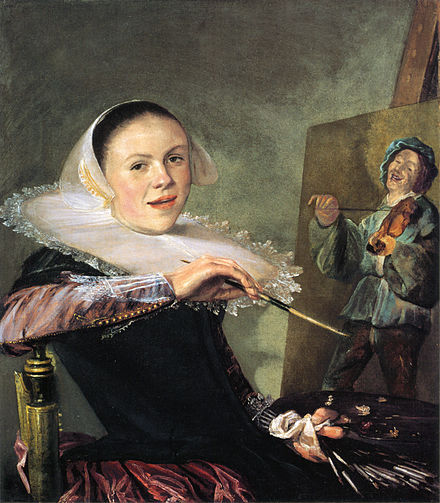
During her life her works were highly recognized, but she got forgotten after her death and rediscovered in the 19th century. In her paintings could be identified the acronym "JL", asually followed by a star, she was the first woman to be inserted in the Guild of St. Luke, the guild Haarlem's artists.
-Artemisia Gentileschi (Italian, 1593-1656)
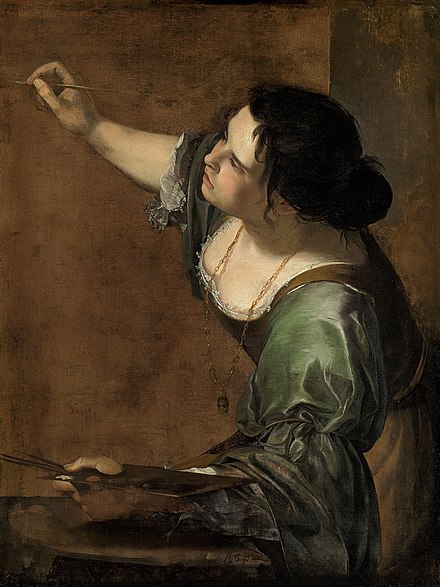
"... Si è talmente appraticata che posso osar de dire che hoggi non ci sia pare a lei, havendo fatto opere che forse i principali maestri di questa professione non arrivano al suo sapere". This is how the father Orazio talked about his nineteen year old daughter to the Medici's court in Florence.
In 1611, Artemisia got raped, and she had to Undergo a humiliating trial, just to marry so that she could "Restore one's reputation" , according to the morality of the time. Only after a few years Artemisia managed to regain her value, in Florence, in Rome, in Naples and even in England, her oldest surviving work is "Susanna and the elders".
-Elisabeth Louise Vigèe Le Brun (French, 1755-1842)

She was a potrait artists who created herself a name during the Ancien Règime, serving as the potrait painting of the Queen of France Marie Antoinette, she painted 600 portraits and 200 landscapes in the course of her life.
-Augusta Savage (Afro-American, 1892-1962)
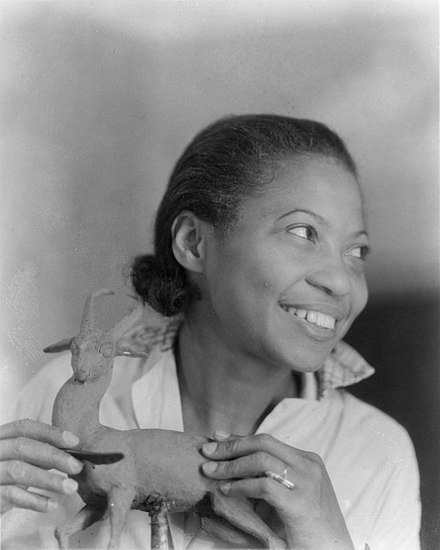
Augusta started making figures when she was a child, which most of them were small animals made out of red clay of her hometown, she kept model claying, and during 1919, at the Palm Beach County Fair, she won $25 prize and ribbon for most original exhibit. After completing her studies, Savage worked in Manhattan steam laundries to support her family along with herself. After a violent stalking made by Joe Gould that lasted for two decades, the stalker died in 1957 after getting lobotomized. In 2004, a public high school, Augusta Fells Savage Institute of Visual Arts, in Baltimore, opened.
-Marie Ellenrieder (German,1791-1863)
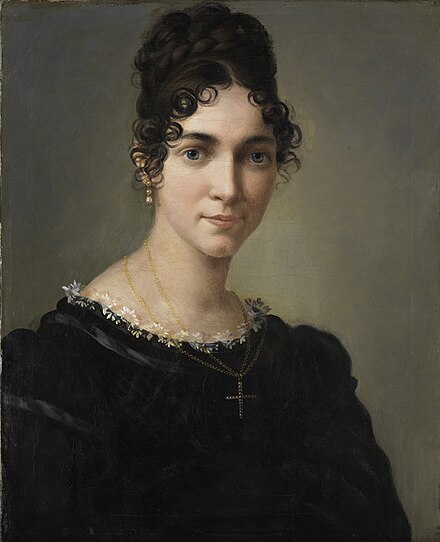
She was known for her portraits and religious paintings. During a two years long stay in Rome, she met some Nazarenes (group of early 19th century German romantic painters who wanted to revive spirituality in art),after becoming a student of Friedrich Overbeck and after being heavily influenced by a friend, she began painting religious image, getting heavily inspired by the Italian renaissance, more specifically by the artist Raphael. In 1829, she became a court painter to Grand Duchess Sophie of Baden.
-Berthe Marie Pauline Morisot (French,1841-1893)

Morisot studied at the Louvre, where she met Edouard Manet, which became her friend and professor. During 1874 she participated at her first Impressionist exhibition, and in 1892 sets up her own solo exhibition.
-Edmonia Lewis or also called "wildfire" (mixed African-American and Native American 1844-1907)

Edmonia was born in Upstate New York but she worked for most of her career in Rome, Italy. She was the first ever African American and Native American sculptor to achieve national and international fame, she began to gain prominence in the USA during the Civil Ware. She was the first black woman artist who has participated and has been recognized to any extent by the American artistic mainstream. She Also in on Molefi Kete Asante's list of 100 Greatest African Americans.
-Marie Gulliemine Benoist (French, 1768-1826)
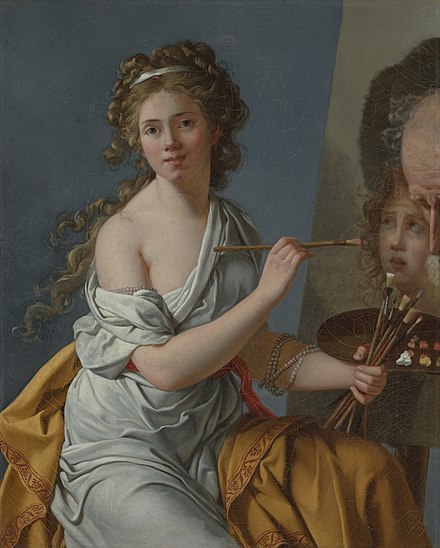
Daughter of a civil servant, Marie was A pupil of Jaques-Louis David, whose she shared the revolutionary ideas with, painting innovative works that have caused whose revolutionary ideals he shared, painting innovative works that caused discussion. She opened a school for young girl artists, but the marriage with the banker Benoist and the political career Of the husband had slowly had effect on her artistic career, forcing her to stop painting. Her most famous work is Potrait of Madeline, which six years before slavery was abolished, so that painting became a simbol for women's emancipation and black people's rights.
-Lavinia Fontana (Italian, 1552-1614)
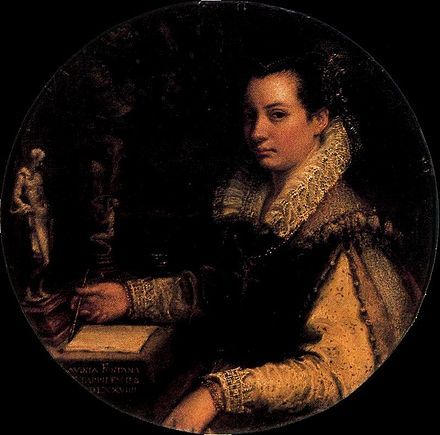
She is remembered for being the first woman artist to paint an altarpiece and for painting the first female nude by a woman (Minerva in the act of dressing), commissioned by Scipione Borghese.
-Elisabetta Sirani. (Italian, 1698-1665)
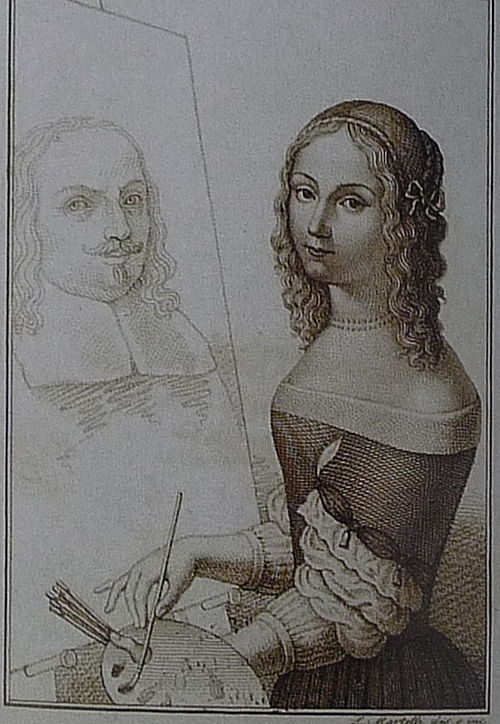
Her admirable artistic skills, that would vary from painting, drawing and engraving, permitted her, in 1660, to enter in the National Academy of S. Luca, making her work as s professor. After two years she replaced her father in his work of his Artistic workshop, turning it into an art schools for girls, becoming the first woman in Europe to have a girls' school of painting, like Artemisia Gentileschi, she represent female characters as strong and proud, mainly drawn from Greek and Roman stories. (ex. Timoclea Kills The Captain of Alexander the Great, 1659).
#judith leyster#artemisia gentileschi#Elisabeth Louise Vigèe Le Brun#Augusta Savage#Marie Ellenrieder#berthe morisot#Edmonia Lewis#Marie Gulliemine Benoist#Lavinia Fontana#Elisabetta Sirani#women artists#renaissance#baroque#art#women in art#artist women#feminism#women history#radical feminists do touch#radical feminists please interact#history#terfblr#terfsafe#cultura#culture
1K notes
·
View notes
Text

I'm a fan of traits & trait mods and I really liked Atomtanned's mod /based on Dill's Turn-Ons & Turn-Offs/. This is quite an extensive edit - I just wanted to adjust it a little for my game and once I started I couldn't stop xD
Atomtanned's Trait-Based Chemistry EDIT
& (optional mod) ONLY TO Chemistry
⚡ Download: SFS ⚡BOX
11.11.2024 third UPDATE of Chemistry Mod. Fixed: Loner not triggering Introvert TO, Alien genetics trigger Alien TO correctly, Facial hair TO triggers correctly, Hats do not trigger Intellect TO, Cologne doesn't trigger Occult TO. Thanks for the fixes go to @episims . Correct file has "Update3" in the name
*Archive contains PDF file with detailed list of changes (added / removed stuff) and a few notes.
🟢 Trait-based Chemistry mod edit is available in 7 Languages: English, German, Finnish, Polish, Swedish, Russian, French
❕ New stuff: added Facial Hair TO (replaces Daydreamer), Business Shark TO (was: Serious), Expressive TO (was: Unique). Increased hobby and interest requirements from 5 to 8 pts, Formal wear added to Stylish TO - and more...
I also included an optional mod that switches off Zodiac / Aspiration chemistry and balances out the chemistry bolts gain - so it makes chemistry betwen Sims much less complicated. Obviously it will only be useful for those who like to control every aspect of their Sims romantic lives. Details under the cut.
You'll need Traits /and stuff required for these to work/.
Credits: @atomtanned , @lilbabydilljr , Epi for their TO replacements, @lazyduchess for Lua script
@peanuttysims for No Zodiac & Aspiration attraction (MTS2 link)
I used TS4 icons, icon mashups/ edits, and my own.
Thanks: @tvickiesims , @vegan-kaktus , @lilakartoffelbrei . Special thanks to @episims for all the support 💎🤗
*This is for The Sims 2
More under the cut:
Trait-based Chemistry mod
It will replace original TS2 turn-ons and turn-offs with entirely new ones (only hair colors and fitness/fatness are unchanged!).
It conflicts with NickM406's No More Loading the * Family mod , and Tunaisafish’s Attraction Fix, make sure you don't have tunaisafish_fix_attractiontraits package in your Downloads.
🟢 It's compatible with mods that change /or switch off Zodiac chemistry, Aspiration chemistry, or both.
⚡TURN-ONS / TURN-OFFS:
Note: I've added and removed some stuff, for example Plantsims and Bigfoot from 'Occult' TO, and Zombies from 'Undead' TO!
(This is an edit of the list posted by Atomtanned: )
Adventurous: 3 vacations, Adventurous, Daredevil, Sailor, Brave
Alien: Trait, skin, eyes
Animal Lover: 2 pet friends, Animal Lover, Cat Person, Dog Person, Equestrian
Artistic: Artistic, Avant Garde, Photographer's Eye, Savvy Sculptor, Flower Arranging/Pottery/Sewing silver badge, Arts & Crafts hobby, Creative skill
Athletic: Athletic, Equestrian, Loves to Swim, Sports/Fitness hobby, Body skill
Business shark: Born-salesperson, Ambitious, Mean Spirited, Snob, Workaholic
Charismatic (charisma): Charismatic, Irresistible, Schmoozer, Star Quality, Charisma skill
Cultured (bookish): Avant Garde, Bookworm, Film & Literature Hobby
Expressive: Excitable, Childish, Party Animal, Dramatic, Over-Emotional, Diva
Facial hair
Fitness / Fatness - original
Foodie: Natural Cook, Cuisine hobby, Cooking skill
Hair colors - original
Indoorsy: Bookworm, Computer Whiz, Couch Potato, Hates the Outdoors, Film & Literature Hobby, Games Hobby
Infamous (bad reputation): Bad Reputation*, Evil, Mean-Spirited
Intellect (high IQ): Genius, Logic Skill
Introvert (reserved): Brooding, Loner, Unflirty, Shy, No sense of humor, Grumpy, Socially Awkward, < 2 Outgoing personality points
Laid Back (slacker): Couch Potato, Mooch, Slob, < 2 Active personality points
Musical: Natural Born Performer, Star Quality, Virtuoso, Music & Dance hobby
Occult (mystical): Werewolf, Witch, Fairy, Mermaid, Supernatural Fan
Outdoorsy: Angler, Green Thumb, Loves the Outdoors, Sailor, Gardening badge, Fishing badge, Nature hobby
Outgoing (social): Irresistible, Flirty, Natural Born Performer, Party Animal, Social Butterfly, > 8 Outgoing personality points
Plant Lover: Eco-Friendly, Gatherer, Green Thumb, Vegetarian, Flower/Gardening badge, Plantsim, Fairy
Rebellious: Daredevil, Inappropriate, Hot-headed, Rebellious.
Stylish (elegance): Snob, Diva, Irresistible, Cosmetology badge, Fashion interest, Formal wear
Technology: Servo, Bot Fan, Computer Whiz, Handy, Vehicle Enthusiast, Robotics silver Badge, Mechanical skill
Tidy: Neat, Cleaning skill, > 8 Neat personality points
Undead: Ghost*, Vampire
Well-Liked: Good reputation*, Friendly, Good, Proper, Nurturing.
*"Ghosts" = sims turned into playable ghosts, with Ghost trait (and Mermaids are sims with mermaid trait, but ofc you don't need these to be able to use this mod).
*Known issue: Servo (as such) doesn't trigger this TO. That has been fixed.
🔸 Hobby requirements in Dill's / Atomtanned's versions (as well as interest) were set to 5 points, which is kinda an average in my game. I don't want TOs to trigger too easily so I've increased these to 8 points, just like Skill point requirements.
Update: I've removed One True Hobby checks, so now only actual hobby enthusiasm points matter for triggering TOs.
I also increased good reputation requirement from 30 to 60.

Above is the comparison of original vs new TOs, in the exact order.
FYI I've fixed the little mistake I've found in the mod - in my version stylish TO works as it should.
If you have any questions about how the game calculates attraction, read this.
And here's free version (SFS) of my buyable ReNuYu potion default, will be useful if you'd like to correct TOs for all your Sims.
"ONLY TO Chemistry" mod
Conflicts with No Zodiac Chemistry by Belladovah , chemistry mods by Peanutty (it incorporates their "No zodiac and no Aspiration"mod) and any other that contain Attraction Constants BCON and Attraction Tuning BCON.
In unmodded TS2 game, interests and skills do not play part in attraction. Trait-based chemistry changes that only to some extent because Zodiac and Aspiration are more important. To make TOs the crucial attraction factor in my game, I disabled Zodiac / Aspiration Chemistry, and tweaked bolt requirements.
This mod makes chemistry between Sims straightforward and TO-based however various bonuses to attraction also apply (!), like Beauty Wish, Vacation bonuses, bonus for very good rep or penalty for extremely bad reputation (even if your Sim likes bad guys, they will be put off by Dirty Dirtbag status, and enticed by extremely good rep). Anyways, if you use this mod and your Sims have no other attraction bonuses, then:
if one Sim has a turn-on towards the other, and the other has none, it results in no bolts
if one Sim has two turn-ons towards the other, and the other has none, Sims have one bolt chemistry
if one Sim has a turn-on towards the other, and the other has a turn-off, it results in negative chemistry
if a couple has single turn-ons towards each other, it gives them one-bolt chemistry
couple has three turn-ons, that gives them two bolts
couple has three turn-ons, one turn-off, that gives them one bolt
couple has double turn-ons, they have three-bolt chemistry
Special bonuses granted by mods for certain Traits like the "irresistible" still matter of course.
703 notes
·
View notes
Text



OTTO GREINER (16 December 1869 – 24 September 1916) was a German painter and graphic artist. He was one of the leading figures in German Symbolist art.
He was born in Leipzig and began his career there as a lithographer and engraver. He relocated to Munich around 1888 and studied there under Alexander Liezen-Mayer. Greiner's mature style – characterized by unexpected spatial juxtapositions and a sharply focused, photographic naturalism – was strongly influenced by the work of Max Klinger, whom he met in 1891 while visiting Rome.
Greiner died in Munich in 1916.
(Don Bryson publication)
110 notes
·
View notes
Text

Ursula Reuter Christiansen (80 today) is a German-born Danish artist who has lived here since 1969. Prior to that she studied at the Academy in Düsseldorf with Joseph Beuys. She connected with Eks-skolen in Denmark and later became Professor at the Royal Academy in Copenhagen.
Reuter Christiansen's art is Expressionist and she often works with myths and fairy tales.
Above: Den lille Rødhætte og ulven, 1982 - Oil, crayon (and possibly water color) over pencil (SMK)
#art#danish artist#german-born artist#ursula reuter christiansen#danish royal academy of fine arts#kunstakademie düsseldorf#joseph beuys#1980s#crayon#oil on paper#pencil drawing#expressionism#eks-skolen#smk#smkmuseum#statens museum for kunst#little red riding hood#fairy tales#mythographic art
9 notes
·
View notes
Text

IDA KERKOVIUS
Sterbende, 1928
#IDA KERKOVIUS#Sterbende#art by women#art#latvian born#german#German women painters#german women artists
4 notes
·
View notes
Text
#TwoForTuesday:


German Expressionist painter and graphic artist Otto Lange was born #OTD (29 October 1879 – 19 December 1944).
Blaue Vögel (Blue Birds), 1916
Papageien (Parrots), 1917
Color woodcuts on Japan laid paper
#animals in art#european art#20th century art#birds in art#bird#birds#print#woodcut#parrot#parrots#Otto Lange#German art#Degenerate art#German expressionism#expressionism#1910s#modern art#OTD#birthday post#blue#graphic art#Two For Tuesday
105 notes
·
View notes
Text

Exploring The Geometric Elegance Of Joseph Binder’s Vintage Posters
Joseph Binder, a Vienna-born graphic designer and painter, founded Wiener Graphik in 1924. Gebrauchsgraphik, a leading German design magazine, showcased his work. Natural images depicted in geometric forms and flat colors defined his Viennese work.



#joseph binder#artist#art#geometric elegance#vintage posters#posters#vienna-born graphic designer#painter#wiener graphik#gebrauchsgraphik#german design magazine
0 notes
Text










Australian artist Marina Strocchi (website marinastrocchi.com). Janet McKenzie writes about her in the Studio International (2022):
"Strocchi was born in Melbourne in 1961 to an Italian father and a third-generation mother of British and German descent. Originating from the Emilia-Romagna region of Italy, her father, Giacomo Strocchi, was passionate about politics and was also a key figure in the Brooks Crescent protests that sought to stop plans to demolish period houses in Melbourne and replace them with high-rise public housing. He fought with the Italian partisans during the war and was decorated for bravery, but the war took its toll, and as with many refugees and migrants to Australia, the trauma was played out in family life and was witnessed by his children.
...............................
By the 1950s and 60s, the children of politicised Australians, and those of traumatised refugees and migrants experienced relative prosperity, but they were also sensitive to the complexity of their inheritance. The impact of this generation is inestimable and is responsible for many of the most important cultural and intellectual developments and stellar achievements in the art world in Australia since. Strocchi’s independent path as an artist and the first art coordinator of the Ikuntji Art Centre at Haasts Bluff (1992-1997) was necessarily born of a plethora of complex factors. Her father’s larger than life presence impacted her emotional development and his politically charged behaviour meant she could not turn her back on society’s ills. Her mother, Nona May’s example, and creative attitude within their home life showed a creative means of building a fulfilling, resilient life.
Strocchi’s dedication to the arts as a tool for the betterment of humanity shares Counihan’s politically charged example, although hers was intuitively sought. From 1984 to 1987, while in her early 20s, she travelled extensively, to Europe where she visited museums, churches and galleries and explored family roots (Italy, France, Spain, England) and to the US and Mexico. Back in Australia and with a growing awareness of how art could be a force for good, and possessing both empathy and curiosity, she was persuaded by friends to visit Central Australia. The inspiring achievements of the Papunya Tula Artists’ Company, established in 1972, and other projects that were developing, particularly those for women, led to her decades-long commitment towards empowering the lives of First Nations people through art. She is quick to point out that her motives were not intentional: “It’s only looking back that one could say this – I did come up against naysayers – people who wanted to see failure and restrict painting to men, but I listened to the First Nations people and was supported by Wayne Eager, who had experience from Roar Studios and growing up with parents who were artists.”
https://www.studiointernational.com/.../marina-strocchi...#
89 notes
·
View notes
Text

Allegory of Spring
Artist: Nathaniel Schmitt (German, 1847-1918)
Date: 1871
Medium: Oil on Canvas
Collection: Private Collection
Allegory of springtime, featuring a pretty young blonde-haired 'goddess', painted by German artist Nathanael Schmitt (1847-1918) in 1871. There is little available information on this artist, other than that he was German-born and worked for many years in Rome, and that he came from a long line of painters based in Heidelberg, Germany.
#allegory of spring#german artist#nathaniel schmitt#oil painting#19th century painting#springtime#woman#roses#goddess
125 notes
·
View notes